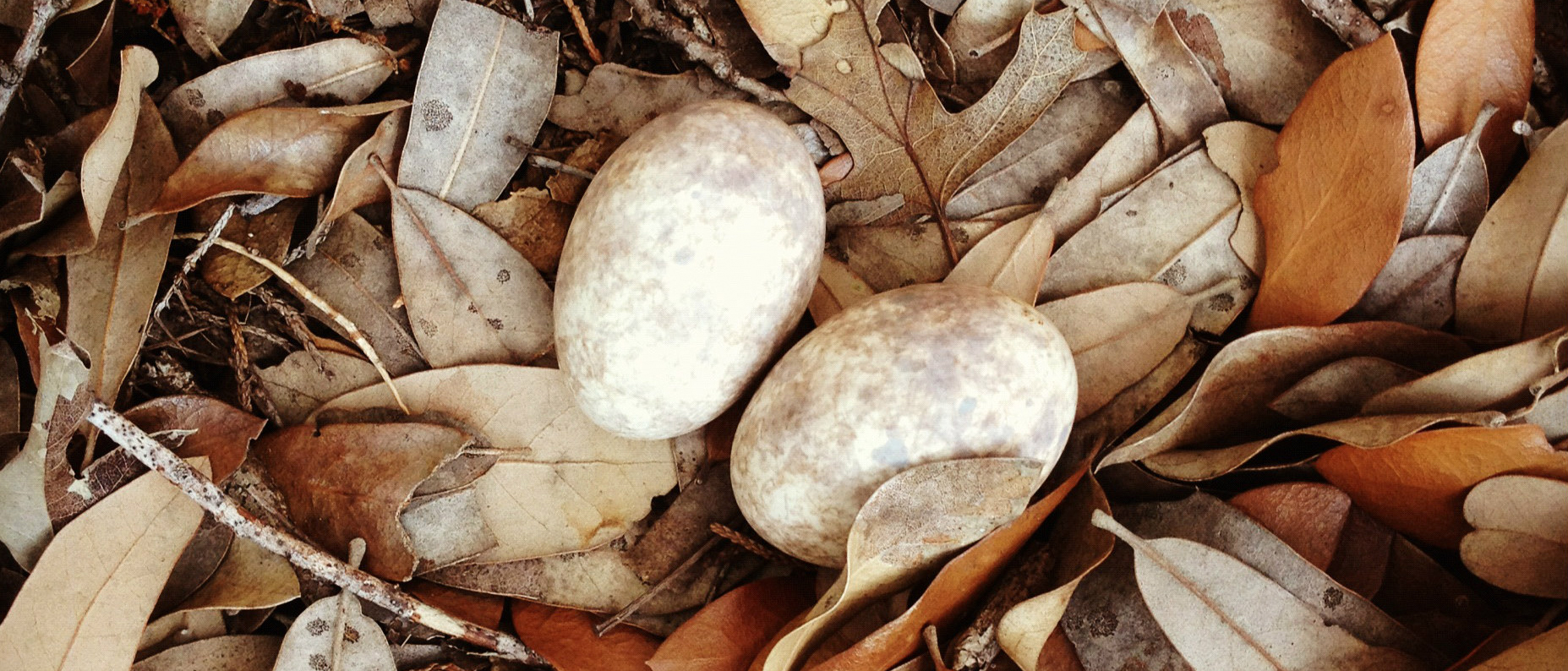 Photo ©
Laura Zebehazy
Photo ©
Laura Zebehazy
By Lauren Flesher
Spring is coming, and with it, a flurry of nest-building activity. Birds will soon be inspecting nesting sites, collecting nest materials, and putting hours of effort into constructing the perfect nest. But did you know that for some species, the nest is totally unnecessary? Some birds get to skip all the hard work of construction and go straight to the egg-laying and incubation. Meet a few of these nestless species below:

Emperor Penguins with Chick
Parents protect eggs and young from cold.
Emperor Penguin
The cold winds of the Antarctic ice shelves where Emperor Penguins make their home don’t allow for leaving eggs out on the ice. Even if nesting materials could be found, the eggs would freeze quickly from exposure. So instead of building a nest, the Emperor Penguin lays her single egg on the bare ice, then quickly rolls it onto the feet of the male. Protected from the cold by thick fat reserves, the egg is incubated in its father’s abdominal pocket all winter. Without this strategy, Emperor Penguins would be unable to breed.
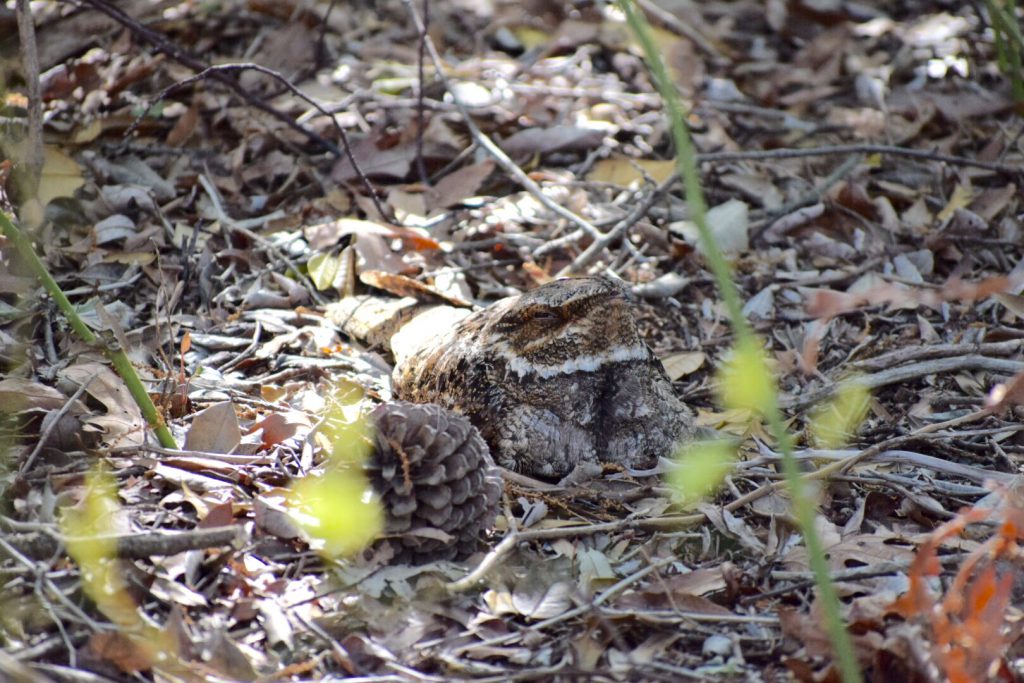
Can You See Me?
Heavily camouflaged, this bird practically disappears into the forest floor.
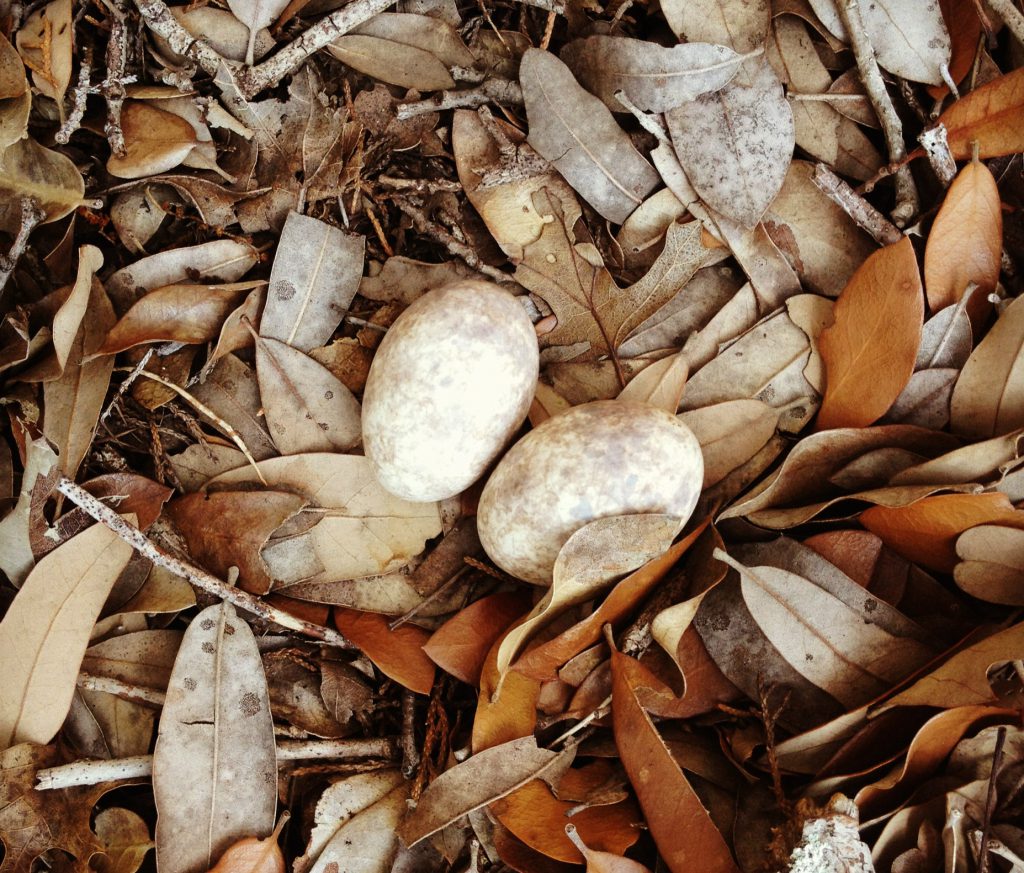
Chuck-will's-widow Eggs
These birds lay their mottled eggs directly on the leaf litter. Watch your step!
Chuck-will’s-widow
The Chuck-will’s-widow breeds in the Mid-Atlantic and Southeast states. The largest nightjar in North America, the Chuck-will’s-widow lays its eggs directly on the ground among dead leaves, pine needles, or bare ground. The eggs are intricately patterned to blend in with the surrounding leaf litter to avoid the notice of ground predators.
John James Audubon claims to have witnessed a pair of birds relocating their eggs by carrying them in the mouth, but no one has ever verified this.
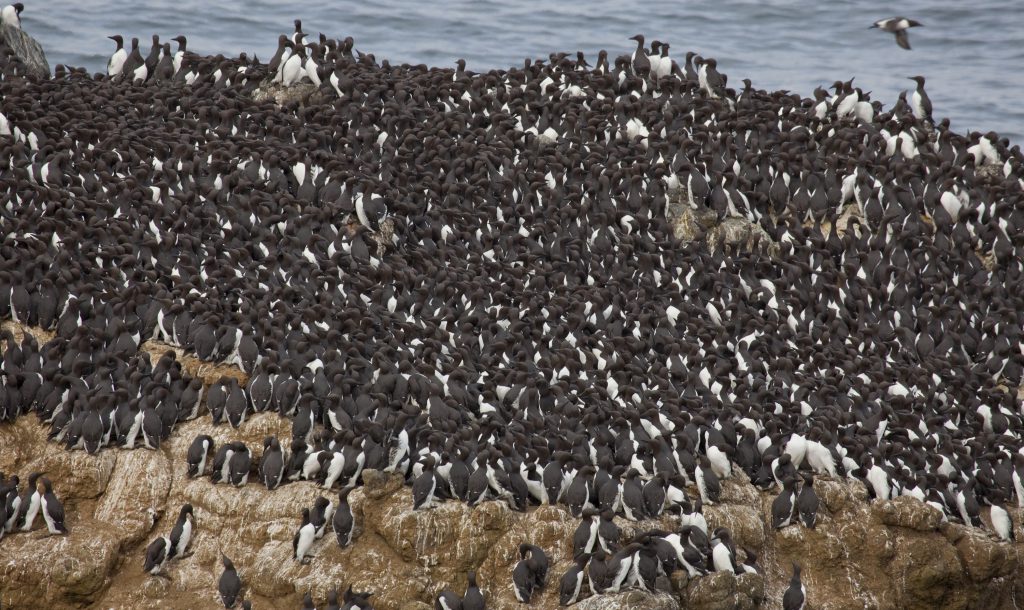
Common Murre Colony
Densely packed colonies leave no room for nests.
Common Murre
This species of auk breeds on narrow rocky ledges in the Arctic in colonies of hundreds. Eggs are laid directly onto these ledges and incubated. Due to the lack of a protective nest, the parents must stay with their egg constantly to deter predators such as gulls and crows. The eggs are pointed at one end, which is helpful in preventing them from rolling off of a cliff when disturbed.
Common Murres experience fierce site competition, and breeding colonies are often so dense that individuals are touching. Perhaps it is this competition for space that leaves no room for nest-building in a murre colony.
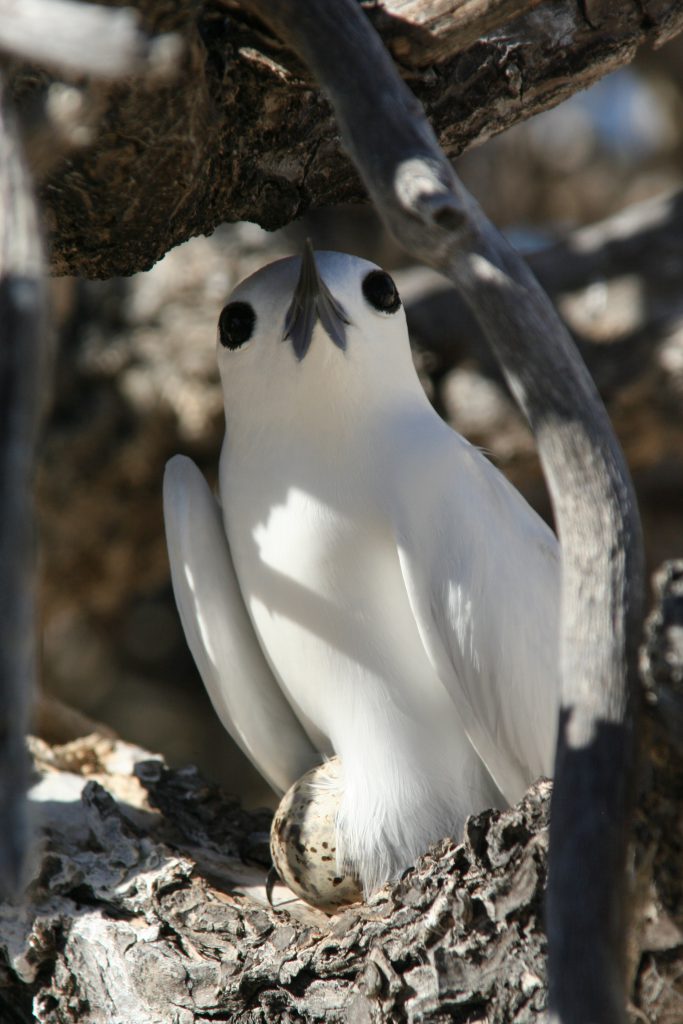
White Tern Incubating
While most tern species create a scrape on the ground, White Terns lay their eggs in a depression or fork of a tree branch.
White Tern
The White Tern, also known as the Angel Tern or White Noddy, occurs in tropical oceans across the globe. While most members of the tern family lay eggs in scrapes on the ground, the White Tern raises its young in the trees.
Its relative, the Black Noddy, also uses this strategy. But while the Black Noddy builds a nest in the canopy to contain its eggs, the White Tern forgoes construction and simply lays its egg in a depression or a fork of bare branch. Why they do this is unknown, but it is theorized that the prevalence of nest parasites in seabird colonies may be a factor. No nest, no nest parasites!
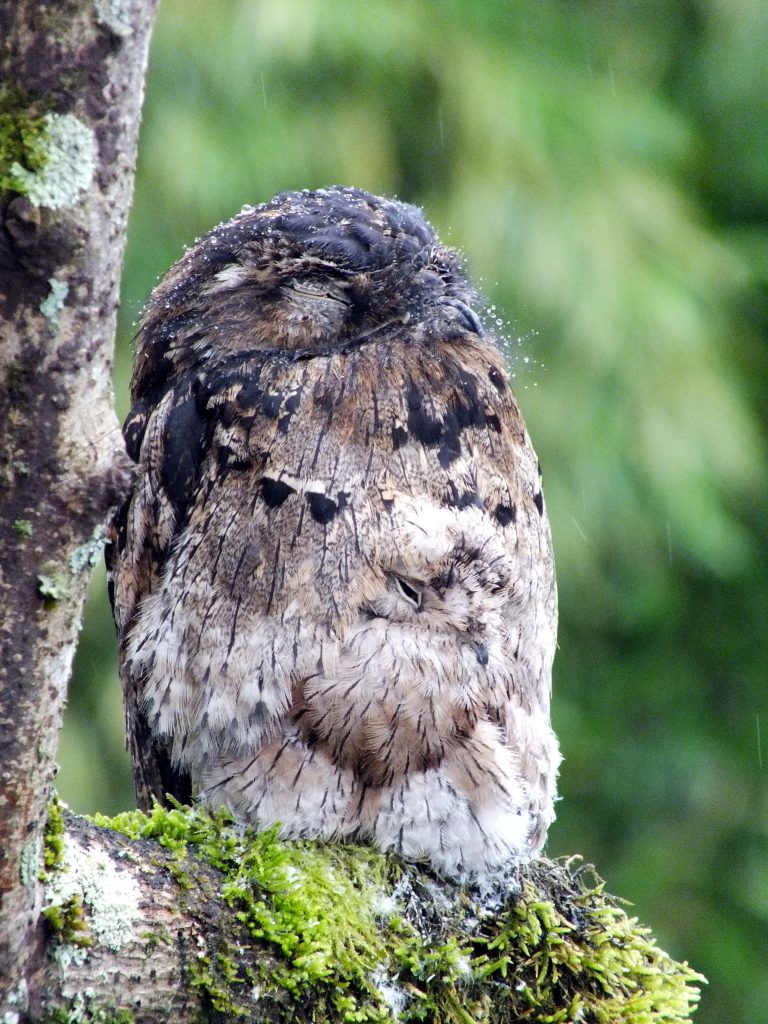
Common Potoo With Chick
Can you spot the chick nestled against the adult potoo?
Common Potoo
This nocturnal insect-eater of the Neotropics depends on its impersonation of a dead tree branch to survive. During the day, it hides from predators in plain sight, holding itself erect and still, and using its camouflaged plumage to perfectly mimic the appearance of a broken stump.
Building a nest during breeding season would make the Common Potoo easy prey for predators. To avoid this problem, the Common Potoo lays its egg on top of a broken branch. It can then incubate the egg while remaining perfectly still and blending seamlessly into its surroundings. See if you can spot the nestling in this photo.
Whether for camouflage or parasite reduction, or due to cold weather or nest site competition, not building a nest can certainly have its perks. In the coming months, as you watch the songbirds in your yard collect twigs, mud, moss, and grass and begin making elaborate nests, remember that all across the globe there are birds taking it easy before the real work of raising young begins.
Killdeer did not build the nest,just layed eggs between few small stones from our vegetable garden. Sue